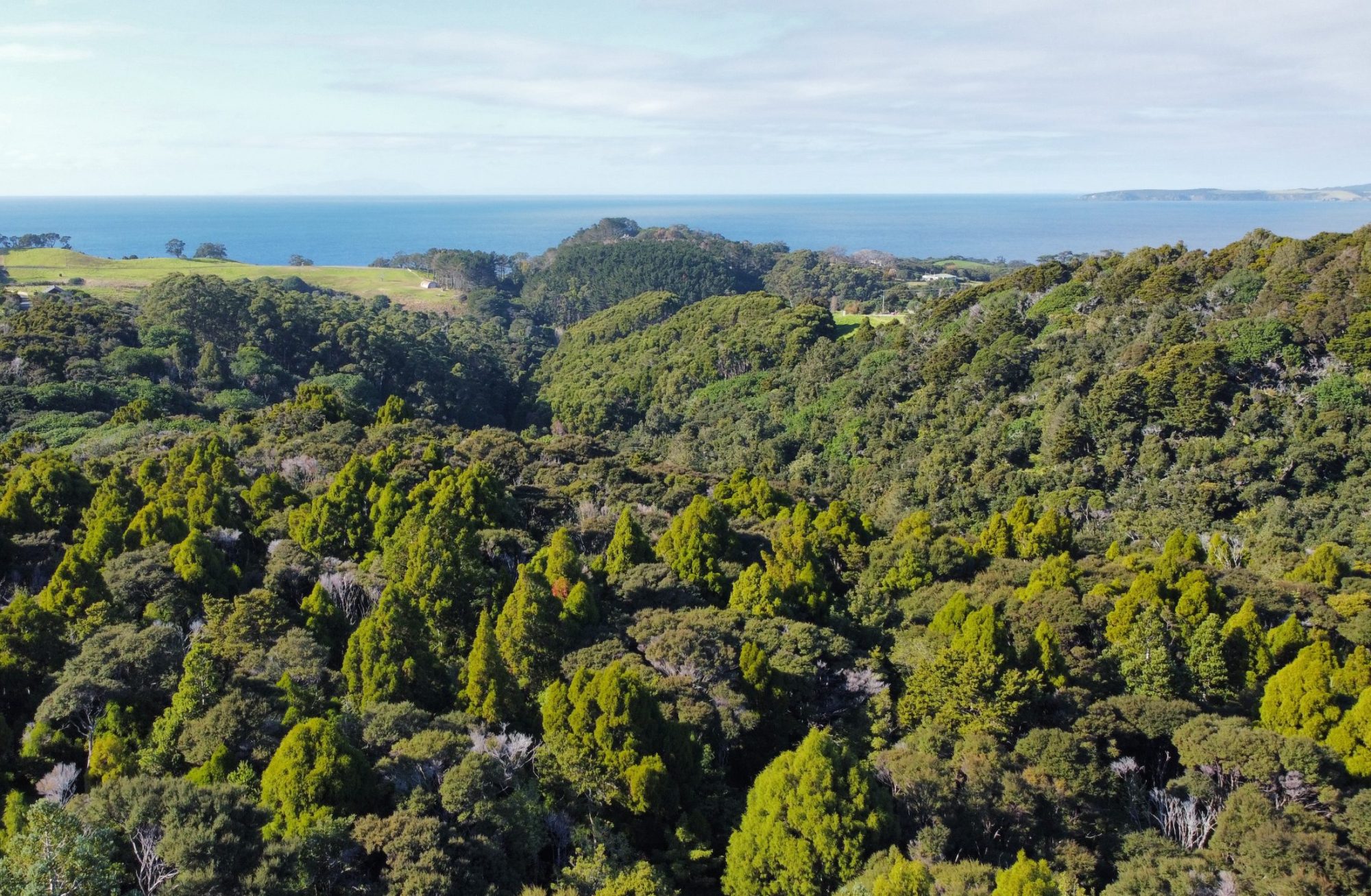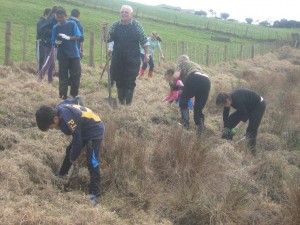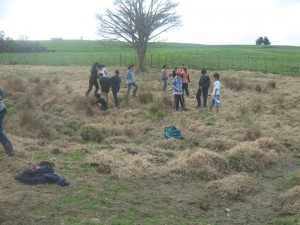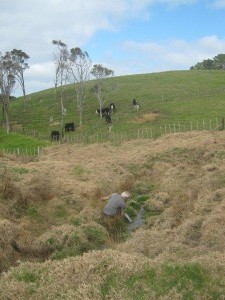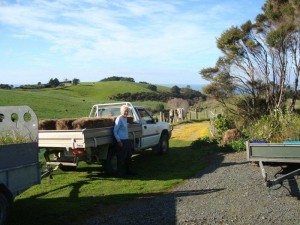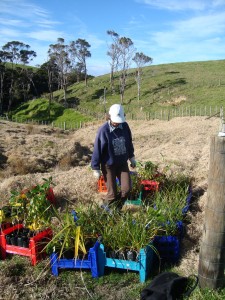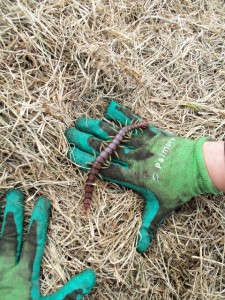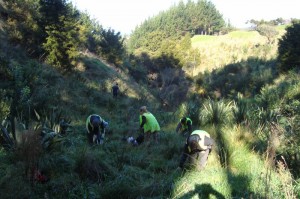Due to forecast rain on the 8th August, the TFS planting day with Takapuna Normal Intermediate, on Noeline Wainwright’s property, was postponed until Thursday, the 15th August. We were devastated to learn from Shelly, the TFS co-ordinator, that the cows had managed to get hold of about 300 cabbage trees and carex.
Fortunately, the roots of many of the chewed plants were still in tact so we planted them and hope the pruning will kick them into action.
The rain held off and the children and volunteers planted approximately 600 wetland plants. Many thanks to Takapuna Normal Intermediate and our volunteers, Arthur and Trish Gundy, Neil and Cheryl Sutherland. Thanks also to Linda Lee for organising a delicious lunch and to Noeline for hosting the day and supporting the project.
